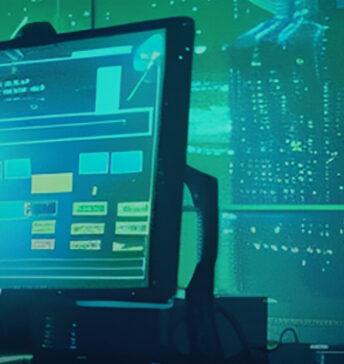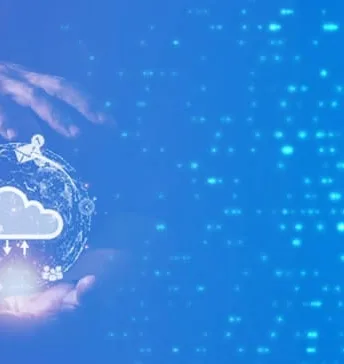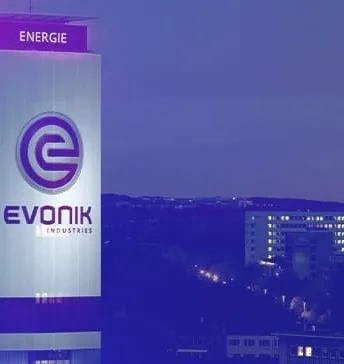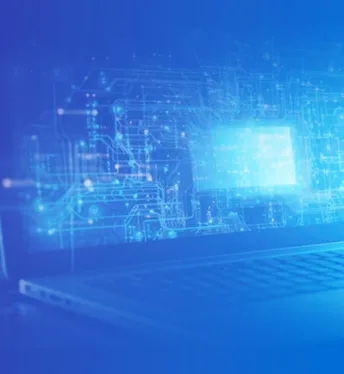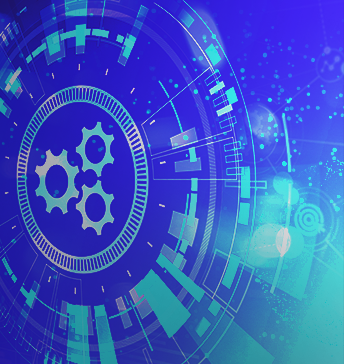If you think the only companies operating with old, outdated tech are small, poorly funded ones, you couldn’t be further off. Legacy systems can be found at the heart of several major industries, including healthcare, insurance, finance, transportation, and defense.
According to Forbes, a whopping 60% of enterprise applications are considered legacy systems. These outdated technologies, while crucial for core business functions, are becoming a burden in today’s rapidly evolving digital world.
Legacy systems often suffer from technical debt, and their rigid architectures struggle to integrate with modern tools and applications, hindering your ability to adapt and innovate. This is where legacy system modernization comes in.
Modernizing legacy systems isn’t about throwing everything you have away. It’s about building next-generation applications on the foundation of the valuable functionalities embedded in your existing systems. This approach unlocks a world of benefits, propelling your business towards digital transformation success.
The Legacy System Conundrum
Legacy systems can refer to any technology that is out-of-date. Programming languages, file formats, computer hardware, and software are all examples of legacy systems.
But not every legacy system uses antiquated technology. In fact, many still work just fine, and are utilized by businesses for their core functions. Unfortunately, the fact that this tech still appears to work optimally is becoming a serious issue.
In 2019, the GAO (Government Accountability Office) ran a report on the top 10 industries most in need of a systems update. According to its findings, these systems varied from 8 to 51 years old, and security risks ranged from moderate to high (no agencies were reported as a low security risk.)
If these systems didn’t work properly, the answer would be easy: they would all need to be replaced, and companies would do so and move on. However, because they are technically still capable of performing their functions, some companies may struggle to identify when it’s time to update or replace their legacy systems. Often, what holds businesses’ back is fear: fear of system failure, of things running worse than before, of the potential costs incurred by updating their systems.
The unfortunate truth? Refusing to change these systems is costing companies more in technical debt than it would to modernize them.
Challenges of Legacy Systems
Technical debt makes up a huge percentage of the overall difficulties legacy systems create. This debt refers not only to money, but also other resources such as valuable time, materials, and energy. This technical debt manifests itself in several ways, including the following.
Maintenance Difficulties
Think of legacy systems like a classic car. A large chunk of the cost of having a vintage vehicle is maintaining it, which requires finding the pieces it needs for any repairs. This is often difficult, as the necessary pieces have often been out of production for years. Because no one regularly manufactures those pieces, finding them requires more time and money. And if you can’t find the part you need, similar parts might need to be adapted to work with the car’s central system. You can’t just slap any engine in; it must be modified to fit. And if you can’t do the work yourself, you must find someone who can do it for you.
This analogy fits quite well with the reality of maintaining legacy systems. Hardware is often difficult to replace. Software follows this same pattern, often unregulated. Similarly, finding skilled professionals who understand legacy systems and can work on them is becoming increasingly difficult.
Maybe your system runs on legacy code that programmers aren’t taught anymore. Or maybe, over the years, you have made so many changes and customizations to your legacy systems’ codebase that it is now a complex maze that’s nearly impossible to decipher, making regular maintenance a nightmare.
Whatever your case is, the fact remains: If you can’t effectively maintain a system, especially one that’s integral to your business, you are just waiting for disaster to strike.
Security Vulnerabilities
Disaster could come in many forms – one of which is a security failure. Legacy systems are less resistant to cyberattacks, which makes sense because the system’s technology has been around for long enough to give hackers time to learn how to expose vulnerabilities in the code. Another security issue is that outdated software is often no longer supported by its vendor, meaning it’s not getting the necessary patches or updates to keep it compliant with the latest security requirements.
Compliance
Not being caught up with updates is a security risk, but it’s also a huge liability when it comes to compliance. Older systems are less likely to meet current regulations, and in some sectors, this can come at a high cost – to the tune of millions of dollars in fees.
Integration
Integrating modern tools, cloud services, and mobile applications can be a significant hurdle with legacy systems. This is because when these systems were created, many of our modern tools didn’t exist yet – meaning it is literally impossible for systems of that time to be compatible with them. But today, as services like cloud and mobile apps become an essential part of business, legacy systems inability to integrate them is becoming a liability.
Agility and Efficiency
Market changes and advancements in technology create new challenges on a near daily basis. For companies to succeed, they must have the speed to adopt these new technologies. But for companies with legacy systems, this can be a major obstacle, as they often lack the organizational agility needed for these types of projects.
It can be both difficult and demanding to transition from rigid legacy IT to flexible, digitally enabled IT, but this change is essential to satisfy today’s IT needs. Legacy systems may choke innovation and cause large losses, in part because they are difficult to maintain and modify. Additionally, obsolete software is less effective, which lowers worker productivity.
Legacy systems are also less efficient when it comes to storing data. Most modern companies deal with a huge amount of data that legacy databases weren’t built to handle. This means that data is spread across several different databases and storage centers, making it challenge to organize and analyze. It is significantly more efficient to utilize the cloud’s near infinite capacity to store data, but legacy systems often can’t support cloud enablement.
Lost Business Opportunities
Finally, when you combine the previously mentioned challenges – each of which can independently cause significant financial losses – the result can also be losing out on business opportunities.
Limitations created by legacy systems stifle your ability to compete in today’s dynamic market. Competitors who have already modernized will outpace you at every turn, while your company continues to be bogged down by costly maintenance, security vulnerabilities, and non-compliance. Luckily, there is an answer for these challenges: companies need to modernize legacy applications and systems.
What are Next-Generation Applications?
Next-generation applications are advanced software programs that use new technologies and features to improve user experience and meet the needs of modern users. They are built for agility, scalability, and an effortless user experience. By integrating seamlessly with modern technologies, they provide a foundation for continuous business innovation.
Modernization Approaches for Next-Generation Applications
When it comes to a legacy system modernization project, there are two main approaches:
Rip and Replace
This approach is essentially a complete system overhaul, starting entirely from scratch. A more accurate term would be a “replace, then rip.” Fully removing infrastructure would cause an extended interruption that most businesses can’t afford. Thus, most build the new system from the ground up, then remove the old system. This method is costly, time-consuming, and has a high risk of failure.
Evolve (Restructure and Optimize)
This approach focuses on leveraging portions of your existing legacy system while modernizing its architecture and codebase. Compared to rip and replace, this option does not disrupt major business processes. By leveraging existing code and infrastructure, you reduce the need for extensive re-development, minimizing time and costs. However, this method can turn into a case of treating the symptoms and not the disease and may ultimately result in more problems down the road.
Benefits of Modernized Legacy Systems
Modernizing your legacy systems unlocks a treasure trove of benefits, including:
- Improved User Experience: Modernized applications offer a sleek and intuitive interface, enhancing user satisfaction and ease of utilization.
- Increased Agility and Scalability: Your applications can easily adapt to changing business needs and scale effortlessly.
- Reduced Maintenance Costs: Clean and optimized code requires less effort to maintain, freeing up resources to put towards your unique business goals.
- Enhanced Security: Modernization strengthens your security posture, protecting your data from cyber threats. By ensuring your system is up to date, you get the latest patches offered from the vendor to maintain the integrity of your services.
- Improved Integration with Modern Technologies: Seamless integration with modern tools and services fosters collaboration and innovation.
- Faster Time-to-Market for New Features: Modernized systems allow for quicker development and deployment of new features, allowing you to keep up with your competition.
- A Foundation for Future Digital Transformation: Modernized systems provide a solid foundation for future digital initiatives- in other words, ensuring your company is “future-proof.”
Conclusion
Legacy system modernization isn’t just about updating technology; it’s about unlocking the full potential of your existing systems. By building next-generation applications on a modernized foundation, your business gains greater agility, scalability, and a competitive edge.
As appealing as the benefits of modernization are, a major motivating factor to update your architecture should be the detriments of hanging on to legacy systems. Expensive, time-consuming maintenance, security vulnerabilities, regulation fees and fines – these all result in costs that eat into your company’s present-day income, but also your future.
Don’t let your legacy systems hold you back! At Stefanini, we have the expertise to guide you through modernization, unlocking countless benefits for your company. Contact us to explore how modernization can revolutionize your apps and propel your business forward!

